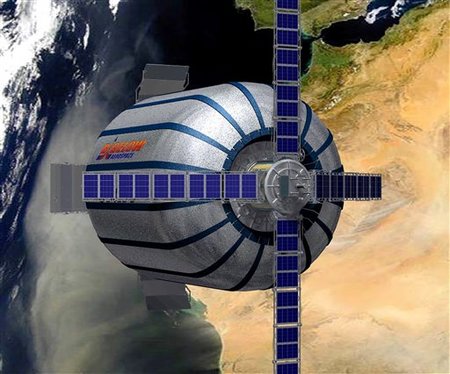Bigelow Aerospace is a company that plans to build inflatable space facilities that will serve as hotels in orbit around the Earth. The service is intended for wealthy tourists.
Fraser Kane, Universe Today

Robert Bigelow's dream of establishing a thriving industry of space tourism took another step forward last Wednesday with the launch of the Genesis 1 experimental spacecraft. Bigelow Aerospace reported that the prototype of the inflatable spacecraft was successfully launched aboard a Russian intercontinental ballistic missile that passed Conversion to a space launcher. After launch, the spacecraft should open the solar collectors and begin self-inflation.
The missile was launched on Wednesday, at 18:53, Moscow time, and during Thursday several messages were published by the company reporting that everything was working fine.
Bigelow Aerospace is a company that plans to build inflatable space facilities that will serve as hotels in orbit around the Earth. The service is intended for wealthy tourists. One of the reasons for the high price of a space flight lies in the enormous weight of a space station of the international space station type, and this is why the company decided to develop inflatable space living facilities that will be brought into space compressed, and only then will they inflate and provide volume for the astronauts' residences and space tourists.
The company took the first step with the launch of Genesis 1, into which a cell 5 meters long and 1.9 meters in diameter was inserted. Once on track, it is designed to double in size. The spacecraft was launched into space on an ISC Kosmotras Dnepr missile, a ballistic missile from the Cold War era that was converted into a space launcher, and which was launched from the Russian launch base in Yansi.
On Wednesday evening, Bigelow confirmed that Genesis 1 had indeed inflated and deployed the solar collectors.
The spaceship carries photos and memorabilia of Bigelow employees, as well as insects that will allow the company to investigate how the spaceship's ability to live is maintained. If all goes well, the spacecraft will survive for five years, allowing engineers time to study its performance and gather data for the next phase of the program. It will also be exposed to years of solar radiation and cosmic rays, and should be bombarded with space debris.
The company is expected to launch the improved version Genesis 2, at the end of 2006 or at the beginning of 2007. After that, spaceships of the Galaxy model will be launched, and finally BA-330 will be launched, a spaceship with a volume of 330 cubic meters (for comparison, the volume of the International Space Station is 425 cubic meters).
Drafting and editing: H. J. Glykasm, translations and technical writing
